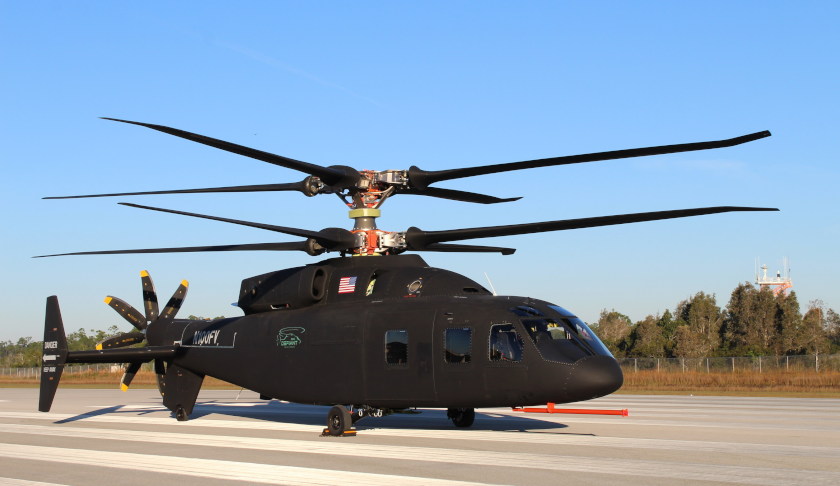Industry partners Boeing and Sikorsky have officially unveiled the SB-1 Defiant demonstrator for the US Armed Forces’ Future Vertical Lift program to replace ageing utility, reconnaissance and attack helicopter platforms for the US and allies.
To continue reading the rest of this article, please log in.
Create free account to get unlimited news articles and more!
Beginning in 2011, the Future Vertical Lift (FVL) program will see next-generation replacements for traditional rotary air frames like the UH-60 Blackhawks, CH-47 Chinooks and OH-58 Kiowas. The FVL program is broken down into four key areas, delivering different capability packages, specifically:
- JMR-Light: Scout version to replace the OH-58 Kiowa; introduction planned for 2030;
- JMR-Medium: Utility and attack versions to replace the UH-60 Blackhawk; introduction planned for 2027-28;
- JMR-Heavy: Cargo version to replace the CH-47 Chinook; introduction planned for 2035, although Boeing expects 2060; and
- JMR-Ultra: New ultra-sized version for vertical lift aircraft with performance similar to fixed-wing tactical transport aircraft, such as the C-130J Super Hercules, with introduction planned for 2025.
The helicopter is participating in the Army's Joint Multi-Role-Medium Technology Demonstrator program. Data from SB-1 Defiant will help the Army and broader US Armed Forces to develop requirements for new utility helicopters expected to enter service in the early 2030s.
Neale Prescott, business development director, Lockheed Martin Rotary Mission Systems (RMS), told Defence Connect earlier in the year, "By the time the ADF begins its evaluation process to replace its current fleet of rotary aircraft in the early 2020s, both Raider and Defiant will be mature technology suites."
Raider is a next-generation light tactical prototype helicopter capable of carrying six troops and external weapons that will redefine helicopter flight during the 21st century.
The Defiant is a next-generation medium tactical lift prototype helicopter, capable of carrying up to 12 troops and four aircrew. Both aircraft utilise the proprietary X2 counter-rotating coaxial main rotors and pusher propeller system, designed by Lockheed Martin subsidiary Sikorsky, which provides improved range, speed and payload for both platforms.
"In the Australian context, both platforms are extremely relevant for Army, with future opportunities for Navy, the systems provide tactical advantages including speed, capacity, simply put, it is a marked step in performance," Prescott added.
Sikorsky and Boeing have designed the SB-1 Defiant to provide the right combination of speed, lift and range that are paramount to both the assault and attack missions while increasing overall manoeuvrability and agility.
Developed with 85 per cent commonality between attack and assault aircraft, the Defiant will reduce development and life cycle costs and ensure minimal disruption or loss of existing rotorcraft expertise. Its open mission systems architecture allows rapid technology and capability insertion to meet evolving FVL requirements and provide the US military with evolutionary sustainability, affordability and readiness for years to come.
The aircraft’s capabilities are largely derived from the X2 rigid co-axial rotor system, which has already proven its airworthiness through flights of the X2 and S-97 Raider. With two coaxial rotors on top that rotate in opposite directions, the extra lift from each rotor’s advancing blade balances out the diminished lift from the opposite side’s retreating blade to eliminate retreating blade stall.
To provide the raw forward thrust for fast flight, the back of the Defiant mounts a pusher propulsor, allowing the aircraft to fly twice as fast and twice as far as today’s conventional helicopter while increasing the overall manoeuvrability and agility required for specific mission objectives. This additional flight component also provides unique and unmatched manoeuvrability in all flight regimes, including hover, low-speed flight and high-speed flight.
Stephen Kuper
Steve has an extensive career across government, defence industry and advocacy, having previously worked for cabinet ministers at both Federal and State levels.

 Login
Login








